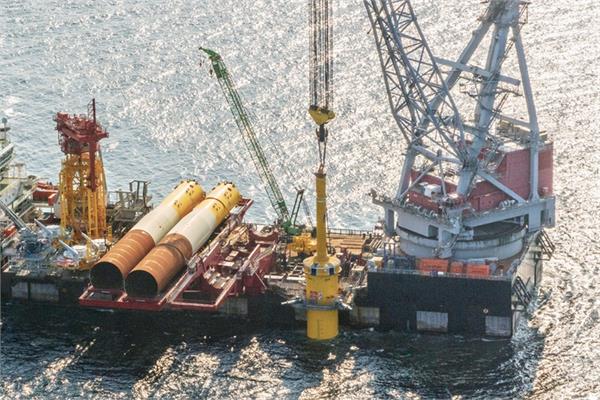
BASF aims to reduce its greenhouse gas emissions by 16.4 million metric tons in the next years and reach net zero emissions globally by 2050.
In an update for investors and financial analysts on the transformation roadmap of the company, BASF confirmed that by 2030 it aims to reduce greenhouse gas emissions by 25% (16.4 million metric tons) compared with 2018 and is maintaining its goal of net zero emissions globally by 2050. BASF will also publish an annual CO2
emissions forecast report as part of its outlook with a corridor ± 0.5 million metric tons.
“There is a brutal war raging in Europe with far-reaching consequences for both people and the economy. Nevertheless, we must not lose sight of the greatest global challenge of our time – climate change. Across BASF, we are working intensively to implement a large number of projects to further reduce our CO2 emissions significantly and achieve our ambitious climate targets. By cooperating with suppliers of raw materials we are also taking steps to reduce our product-related emissions. In this way, we are driving forward our transformation and supporting customers in their efforts to reduce emissions in their product portfolios,” stated Martin Brudermüller, the chairman of the Board of Executive Directors at BASF SE.
In 2021, BASF reduced CO2
emissions by around 3% compared with the previous year, despite significantly higher production volumes, thanks to the increased use of renewable energy. To cover the demand for renewable energy, the company is pursuing a make-and-buy strategy, such as investing in own renewable power assets and purchasing green power from third parties: BASF had already purchased a stake in Vattenfall’s wind farm Hollandse Kust Zuid and signed a 25-year power purchase agreement with Ørsted for the supply of renewable electricity from wind and solar power.
Renewable energy for all its sites
Almost half of the steam demand at the Ludwigshafen (Germany) site is based on generation processes that produce CO2 emissions. However, BASF is working with Siemens Energy on a project to use heat pumps and vapor recompression to upgrade waste heat such that it can be used as steam, avoiding around 160,000 metric tons of CO2 emissions per year. Furthermore, BASF has also signed an agreement with SABIC and Linde to develop and pilot electrically heated steam cracker furnaces.
For the Verbund site in Antwerp (Belgium), BASF aims to reach net zero emissions by 2030 by importing green power from offshore wind parks in combination with the deployment of new, low-emission technologies and a planned large-scale CCS project in the port. In Zhanjiang (China), an advanced Verbund concept and the use of renewable energy will play a key role in significantly reducing CO2 and replacing fossil-fuel energy with electricity from renewable sources. In order to do so, BASF has signed a second framework agreement with the State Power Investment Corporation Limited (SPIC). Finally, BASF has established a joint venture for a solar park that has an expected electricity production of 25 gigawatt hours per year, which will power the production of battery materials for electromobility at the Schwarzheide plant.
“BASF is making significant progress on its path to achieving its emission reduction targets. And we are ready for the next step – achieving sustainable growth through products with reduced carbon footprints,” added Brudermüller.